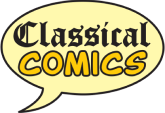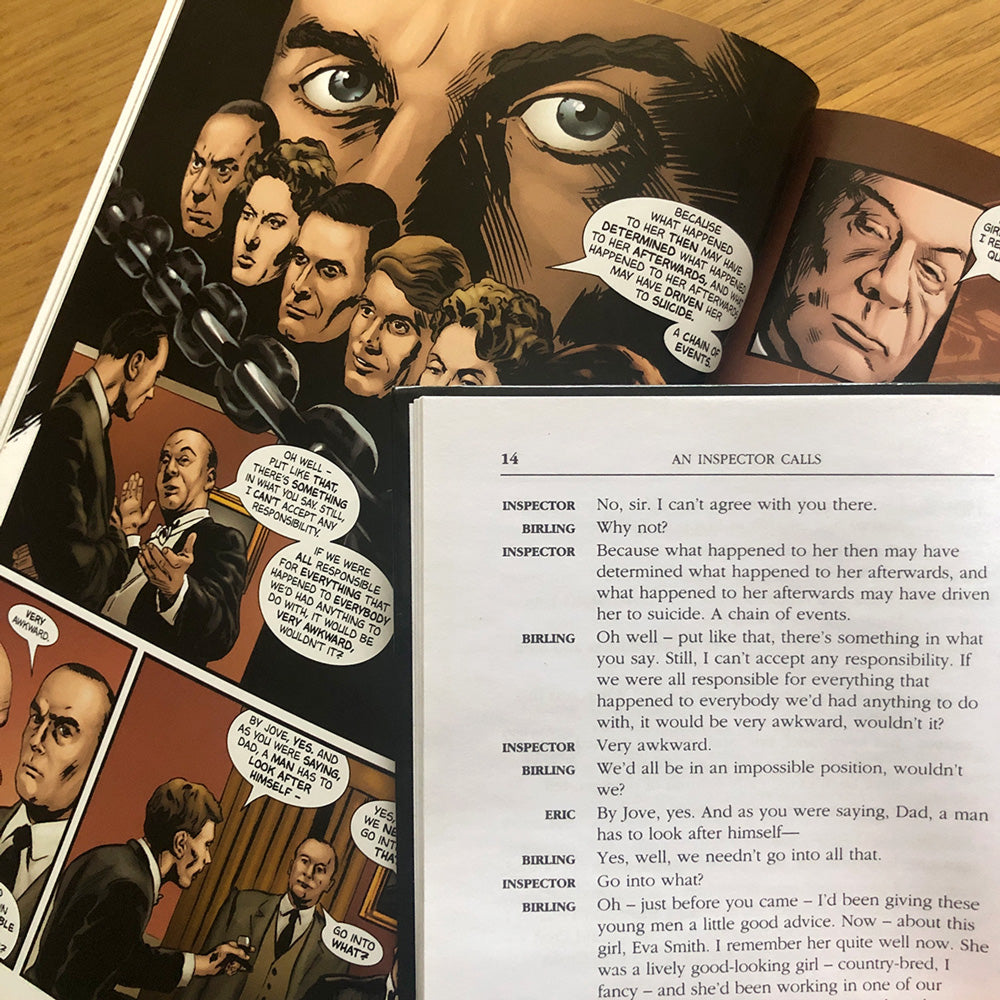How Graphic Novels Can Make All the Difference
My child started Year 10 this year, and like many parents I suddenly felt the weight of GCSE English. The school sent home a list of the books they must have: Macbeth, An Inspector Calls, and A Christmas Carol. Each one came with a specific ISBN — the exact edition I was told to buy.
I did what any parent would do: I ordered the books. These are the copies my child will carry into lessons, annotate, and eventually revise from. I understand why schools insist on them — annotation is a big part of how students prepare for exams.
But here’s where our story is a little different. On our shelves already sat the graphic novel editions of these same texts, published by Classical Comics. We had them long before Year 10 started, and they’ve been a huge help in the past.
And I’ve realised something important: it doesn’t have to be an either/or choice. Having both kinds of books is actually a real advantage.

Why the School Editions Still Matter
I’ll admit it: at first I wondered why we couldn’t just use the graphic novels. After all, they’re faithful to the original texts. Macbeth contains Shakespeare’s full script, word for word. An Inspector Calls is the entire play and A Christmas Carol uses all the original dialogue, only adapted slightly to fit the panel format. They’re not “easy versions.” I could have saved money by not buying the requested ISBNs.
But annotation is key. My child needs those school editions because they’ll be the ones covered in highlights, scribbled with notes, and filled with margin reminders about themes, characters, and key quotes. By Year 11, those books will be revision tools in their own right. That’s why schools insist on them, and rightly so.
Why Graphic Novels Make Such a Difference
That said, the “aha” moments don’t always come from the school editions. For my child, they often come from the graphic novels.
• They make the language clearer. Shakespeare’s old-fashioned wording, or Dickens’s long sentences, can be daunting. With the visuals alongside the text, the meaning is easier to grasp.
• They bring the stories alive. These works were written to be performed, not silently read. In the graphic novels, you can see the Inspector’s stare, Lady Macbeth’s unraveling guilt, and Scrooge’s growing terror.
• They help with motivation. Sometimes, staring at a wall of text just puts a child off. A graphic novel feels friendlier, more approachable — but without losing any of the depth.
• They support different learners. For children with dyslexia, ADHD, or English as an additional language, the images aren’t a distraction; they’re a lifeline.
• They add another layer of analysis. My child can think about why an illustrator has chosen a particular colour, angle, or panel layout — all great practice for critical thinking.
The Best of Both Worlds
What’s worked best for us is using the two types of books together.
• The school edition is the one my child writes in and highlights and is the one expected to be used in class.
• The graphic novel is the one that makes tricky scenes click and builds confidence before facing the more daunting text.
Sometimes my child will read a scene in the graphic novel first to understand the flow, then turn to the same passage in the school edition to analyse it more closely. Other times, we’ll compare how the same moment is presented in both formats. For example: how does “Thunder and lightning. Enter three witches” look in black-and-white text compared with a dramatic illustrated panel? It sparks good conversations about interpretation and emphasis.
Could Graphic Novels Be Enough on Their Own?
I’ve asked myself this question: if the graphic novels are so good, could they replace the school editions altogether?
In theory, yes — especially since the "Original Text" versions of Macbeth and An Inspector Calls that we have contains the full text. But in practice, not likely. Not unless all students have the same graphic novel for the shared classroom experience. Teachers want every student on the same page (literally) so that when they say “turn to page 47,” the class is aligned. That’s why your child needs the school’s recommended edition. It’s practical for annotation and it keeps the classroom running smoothly.
But here’s the potential problem: annotation is only useful if your child understands the text in the first place. And that’s where graphic novels can make a huge difference.
So for now, graphic novels work best for us as a companion. But I’ll be honest: without them, I think my child would find GCSE English a lot more intimidating.
My Advice to Other Parents
If your child is in Year 10, don’t just buy the school editions and hope for the best. Do that, of course — but also consider the graphic novel versions. They may not replace the school editions, but they make them less scary, more engaging, and easier to understand.
For my child, the combination has been powerful. The school books provide the text and the space for annotation. The graphic novels provide the understanding and, crucially, the spark of enjoyment. Together, they’ve turned “set texts” into something much more approachable — even exciting at times.
And in the end, isn’t that what we all want for our children? Not just to pass exams, but to discover that Shakespeare, Priestley, and Dickens aren’t dusty old names, but writers whose stories still matter today.
---
If you'd like to see samples of these texts as graphic novels, you can download free sample pages for:
Original Text Macbeth here.
Original Text An Inspector Calls here.
Original Text A Christmas Carol here.
Macbeth: The Graphic Novel
978-1-906332-03-7
By: William Shakespeare
Script Adaptation: John McDonald
Character Designs and Original Artwork: Jon Haward
Inking Assistant: Gary Erskine
Colouring & Lettering: Nigel Dobbyn
An Inspector Calls: The Graphic Novel
978-1-906332-32-7
By: J.B. Priestley
Script Adaptation: Jason Cobley
Linework: Will Volley
Colouring: Alejandro Sanchez
Lettering: Jim Campbell
A Christmas Carol: The Graphic Novel
978-1-906332-17-4
Script Adaptation: Seán Michael Wilson
Pencils: Mike Collins
Inks: David Roach
Colouring: James Offredi
Lettering: Terry Wiley

